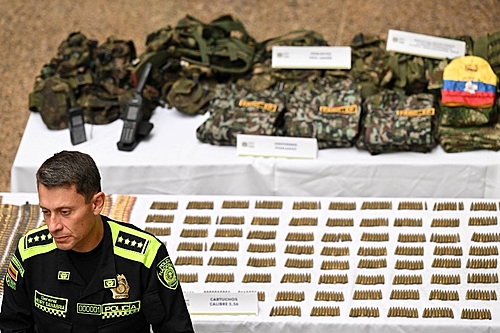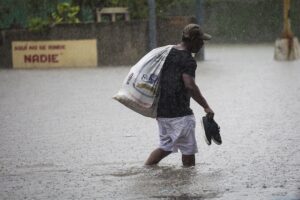
The Minister of the Interior of Colombia, Afonso Prada, presented, last Monday (30), an assessment of the first month of validity of the ceasefire agreement with ten Colombian armed groups. In the regions with the greatest presence of the armed groups that signed the pact, there was a reduction of at least 50% in the registered slaughters, comparing January of last year and the same period of this year.
During the first month of 2022 there were three dead and 40 injured. Earlier this year there were three deaths and nine people injured, according to Prada.
“The figures that we present today are satisfactory and show that we are carrying out a process of dialogue, different and historic, to dismantle high-impact structures of organized crime and simultaneously move forward with the peace agreement with political organizations, despite the enormous difficulties “, said Minister Alfonso Prada.
Altogether, ten irregular armed groups signed the pact with the Colombian government in September last year, defining that the bilateral ceasefire would come into force from 2023. Most have a presence on the Caribbean coast and in the Pacific region of Colombia.
Among them are some dissidents from the FARC-EP, the “Estado Maior Central”, headed by Nestor Gregorio Vera; the Second Marquetalia, under the command of Iván Marquez; the South-Eastern Block, and Front 33, which operates in the region of the Magdalena River.
Among the paramilitary groups are the Autodefensas Gaitanistas de Colombia (AGC), with a presence in the state of Antioquia. And on the Caribbean coast there are the Clan of the Gulf, the Sierra Nevada de Santa Marta and the Los Rastrojos group, which operates in the border region with Venezuela. Regarding the latter, there were indications of contributing to the Venezuelan opponent, Juan Guaidó, in 2019.
Read also: Colombian government and ELN guerrillas conclude talks in Caracas and announce 2nd round in Mexico
In Arauca, the drop in occurrences was 66%, in Córdoba 51.6%, in La Guajira 16.7% and in Antioquia there was a 12% decrease in violence rates.
Despite the government’s optimistic figures, in 2023 alone, 12 massacres were recorded, according to the Peace Development Institute (Indepaz). Already on the first day of the year, three people were victims of a massacre in the municipality of Rio de Oro, department of Cesar.
During the four years of his predecessor, Iván Duque, 313 massacres were recorded, with 1,192 victims, including 957 human rights defenders and 261 former combatants who signed the Peace Accords. About 43% of the cases remain without identification and punishment of the perpetrators of the crime.
Learn more: Increased violence, drug trafficking and inflation: Iván Duque’s legacy in Colombia
Minister Afonso Prada also said that in the last 30 days, 52.5 tons of cocaine were seized, a number 15% higher compared to January 2022.
“There is a bilateral ceasefire, but the only thing that will not be stopped is the fight against drug trafficking, smuggling, extortion and illegal mining,” these Prada.
Colombia is the world’s largest cocaine producer, with around 171,000 hectares under cultivation, which supply approximately 70% of the world market, according to United Nations reports. In 2021, there was a record cocaine production: 1,136 tons, an increase of 8% compared to the previous year, according to the United Nations Office on Drugs and Crime (UNODC).
The ceasefire pact will be monitored by the UN peacekeeping mission in Colombia, the Mission to Support the Peace Process of the Organization of American States, the Colombian Public Defender’s Office and the Catholic Church.
Editing: Arturo Hartmann
Source: www.brasildefato.com.br

